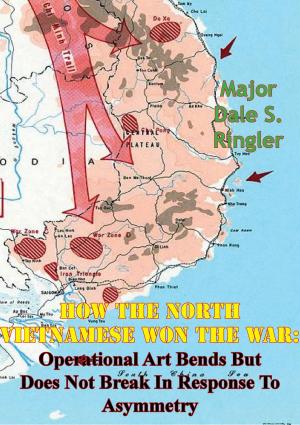U. S. Marines In Battle - Al-Khafji 28 January-1 February 1991 Operation Desert Storm [Illustrated Edition]
Nonfiction, History, Military, Vietnam War, Asian, United States| Author: | Paul W. Westermeyer | ISBN: | 9781782893370 |
| Publisher: | Normanby Press | Publication: | August 15, 2014 |
| Imprint: | Normanby Press | Language: | English |
| Author: | Paul W. Westermeyer |
| ISBN: | 9781782893370 |
| Publisher: | Normanby Press |
| Publication: | August 15, 2014 |
| Imprint: | Normanby Press |
| Language: | English |
Includes over 20 maps, diagrams and illustrations.
“The Battle of Khafji was the first major ground engagement of the Gulf War. It took place in and around the Saudi Arabian city of Khafji, from 29 January to 1 February 1991 and marked the culmination of the Coalition’s air campaign over Kuwait and Iraq, which had begun on 17 January 1991.
Iraqi leader Saddam Hussein, who had already tried and failed to draw Coalition troops into costly ground engagements by shelling Saudi positions and oil storage tanks and firing Scud surface-to-surface missiles at Israel, ordered the invasion of Saudi Arabia from southern Kuwait. The 1st and 5th Mechanized Divisions and 3rd Armored Division were ordered to conduct a multi-pronged invasion toward Khafji, engaging American, Saudi and Qatari forces along the coastline. These three divisions, which had been heavily damaged by Coalition aircraft in the preceding days, attacked on 29 January. Most of their attacks were repulsed by U.S. Marines as well as U.S. Army Rangers and Coalition aircraft, but one of the Iraqi columns occupied Khafji on the night of 29-30 January. Between 30 January and 1 February, two Saudi Arabian National Guard battalions and two Qatari tank companies attempted to retake control of the city, aided by Coalition aircraft and American artillery. By 1 February, the city had been recaptured at the cost of 43 Coalition servicemen dead and 52 wounded. Iraqi Army fatalities numbered between 60 and 300, while an estimated 400 were captured as prisoners of war.
The battle serves as a modern demonstration that air power in a supporting role to ground forces can be of great assistance in halting and defeating a major ground operation. It was also a major test of the Saudi and Qatari armies. Although the capture of Khafji was a propaganda victory for the Ba’athist Iraqi government, its subsequent recapture by Saudi and Qatari ground forces provided a major morale boost for Coalition forces.”-Wiki
Includes over 20 maps, diagrams and illustrations.
“The Battle of Khafji was the first major ground engagement of the Gulf War. It took place in and around the Saudi Arabian city of Khafji, from 29 January to 1 February 1991 and marked the culmination of the Coalition’s air campaign over Kuwait and Iraq, which had begun on 17 January 1991.
Iraqi leader Saddam Hussein, who had already tried and failed to draw Coalition troops into costly ground engagements by shelling Saudi positions and oil storage tanks and firing Scud surface-to-surface missiles at Israel, ordered the invasion of Saudi Arabia from southern Kuwait. The 1st and 5th Mechanized Divisions and 3rd Armored Division were ordered to conduct a multi-pronged invasion toward Khafji, engaging American, Saudi and Qatari forces along the coastline. These three divisions, which had been heavily damaged by Coalition aircraft in the preceding days, attacked on 29 January. Most of their attacks were repulsed by U.S. Marines as well as U.S. Army Rangers and Coalition aircraft, but one of the Iraqi columns occupied Khafji on the night of 29-30 January. Between 30 January and 1 February, two Saudi Arabian National Guard battalions and two Qatari tank companies attempted to retake control of the city, aided by Coalition aircraft and American artillery. By 1 February, the city had been recaptured at the cost of 43 Coalition servicemen dead and 52 wounded. Iraqi Army fatalities numbered between 60 and 300, while an estimated 400 were captured as prisoners of war.
The battle serves as a modern demonstration that air power in a supporting role to ground forces can be of great assistance in halting and defeating a major ground operation. It was also a major test of the Saudi and Qatari armies. Although the capture of Khafji was a propaganda victory for the Ba’athist Iraqi government, its subsequent recapture by Saudi and Qatari ground forces provided a major morale boost for Coalition forces.”-Wiki
![Cover of the book U. S. Marines In Battle - Al-Khafji 28 January-1 February 1991 Operation Desert Storm [Illustrated Edition] by Paul W. Westermeyer, Normanby Press](https://www.kuoky.com/images/2014/august/500x500/9781782893370-Nsey_500x.jpg)




![Cover of the book Thiet Gap! The Battle Of An Loc, April 1972. [Illustrated Edition] by Paul W. Westermeyer](https://www.kuoky.com/images/2014/august/300x300/9781782893844-YLYK_300x.jpg)









![Cover of the book The Invasion of the Crimea: Vol. II [Sixth Edition] by Paul W. Westermeyer](https://www.kuoky.com/images/2017/january/300x300/9781787203433-BbNS_300x.jpg)